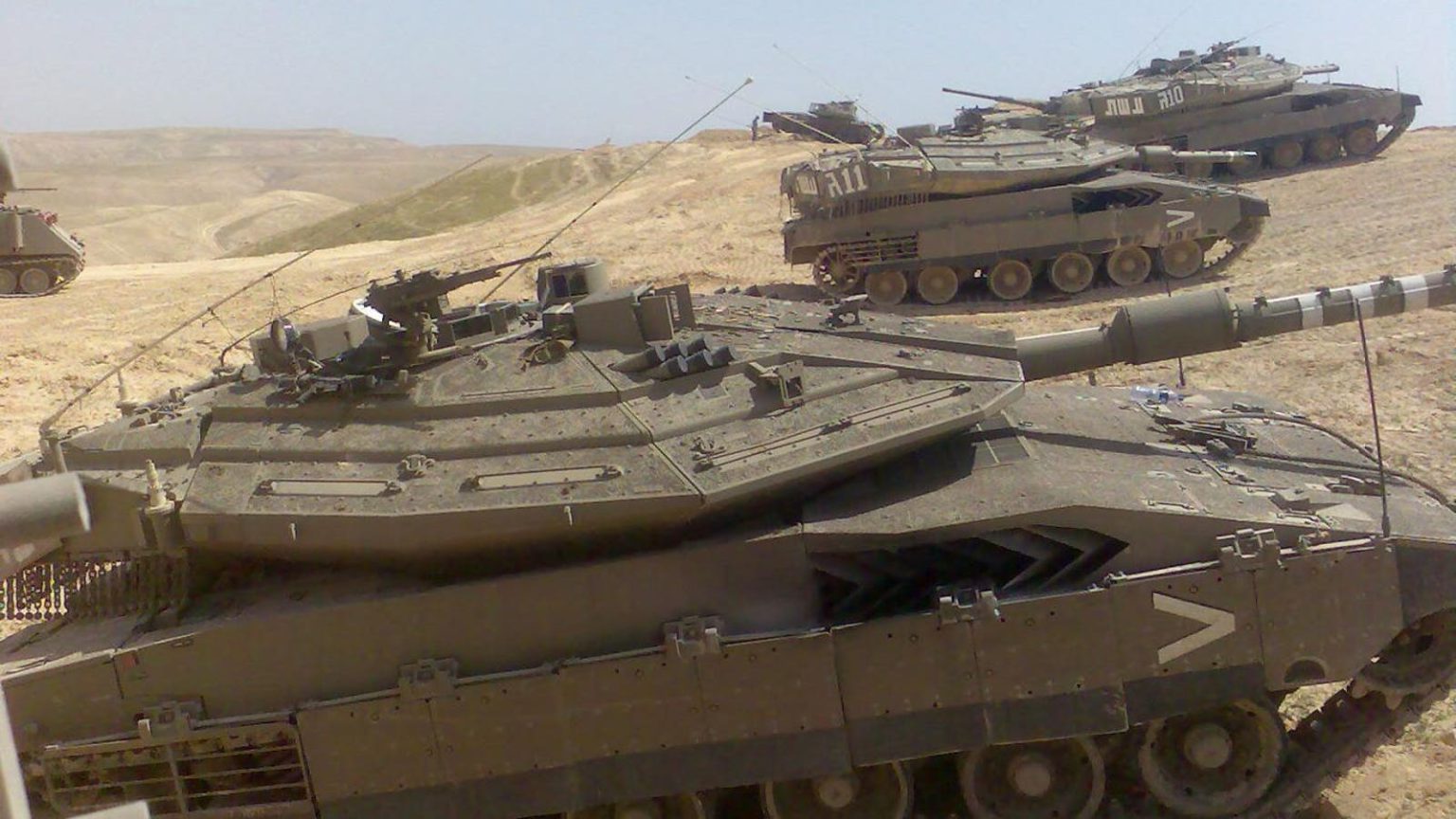Tiny, explosives-laden drones are a serious threat to tanks and other armored vehicles.
Grenade-dropping quadcopters and self-exploding first-person-view racing drones—both available off-the-shelf for just a few thousand dollars—have knocked out multimillion-dollar tanks, hundreds of them, on both sides of Russia’s 21-month wider war on Ukraine.
And now terror group Hamas is deploying them against Israel’s tanks, too. But Israel’s Merkava—fitted with composite armor, a 120-millimeter smoothbore cannon and day-night optics—is better-equipped than most tanks to survive drone attacks. Or at least to protect its crew.
As part of its infiltration of southern Israel in the early hours of Oct. 7—and subsequent murder and abduction of hundreds of Israelis and foreigners—Hamas terrorists struck Israeli outposts along the 40-mile border wall separating Israeli from the densely populated, impoverished Gaza Strip, Hamas’ main base.
Seventy-ton, four-crew Merkava tanks long have patrolled the border. Some of them came under attack by Hamas’ grenade-dropping drones. Hamas videos depict at least two successful strikes on what appear to be examples of the mainstay Merkava Mark IV.
In both cases, the tanks burned. At first glance, it might appear the drones’ grenades, weighing no more than a couple of pounds, penetrated the thin top armor on the Merkavas’ turrets. In general, that’s how Ukrainian and Russian drones respectively knock out Russian and Ukrainian tanks.
But look closely at the Hamas videos of drone strikes on Merkavas. In both, it seems the drones’ grenades struck either the engine compartment in the front of the tank’s hull or the ammunition stowage in the bustle hanging from the back of the turret.
After learning the hard way how effective top-down attacks on tanks can be, the Israelis fitted the Merkava with additional armor on top of its turret, starting with the Mark IIC model in the early 1980s. Tank-maker Mantak meant for the extra armor to protect the tank against top-attack missiles and artillery, but it should work against drones, too.
The Mark IV is the best-protected Merkava variant. Four hundred Mark IVs equip active Israeli army brigades; hundreds more are in reserve. Several design features protect it from top-down attacks. Mantak omitted the loader’s hatch and thickened the armor around the commander’s hatch.
The deletion of turret ingress and egress isn’t a problem: the Merkava is unique among Western-style tanks in having a front-mounted engine and a passenger compartment in the rear of the hull that includes an access hatch that’s nestled between the tracks. The four crew, as well as an infantry team, can climb in and out of a Merkava via that hatch.
Any tank design is a compromise between firepower, protection and mobility. The Israelis opted to add turret armor, and accepted a lower-than-usual power-to-weight ratio from the 1,500-horsepower engine. They couldn’t add more armor to the top of the hull without further reducing the tank’s mobility.
But a top-down strike on the front of the hull at best destroys the tank’s engine and immobilizes it. A strike on the back of the turret, on the bustle, tends to ignite the ammo stored there. But the ensuing secondary explosion occurs outside the turret, not inside, where the crew is.
All that is to say, the Merkava is better-protected from top-down drone attacks than other tank types are. It’s not invulnerable, of course. But a drone strike on a Merkava is far more likely to immobilize the tank and spare the crew than it is to take out both the tank and the crew.
Read the full article here





